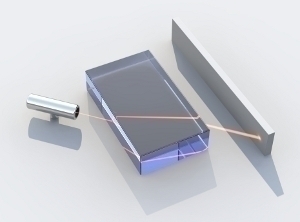What is Index of Refraction?
The index of refraction (refractive index) is a measurement of the speed of light in a medium compared to the speed of light in a vacuum. Since light travels at different speeds in different materials, it may change its direction. For example, the index of refraction for water is 1.33, meaning that light travels 1.33 times as fast in a vacuum as it does in water. This is why light bends when it comes in contact with the surface of water. Likewise, light travels at different speeds through materials at different wavelengths. This is why objects appear to be different colors. For example, the sky appears to be blue because violet wavelengths of light are much slower than other wavelengths and are more strongly scattered as they come in contact with dust, oxygen, nitrogen, and other elements in the atmosphere.
How the Index of Refraction Works
The index of refraction compares the speed of light in a vacuum with the speed of light in any other medium. By knowing how much slower light travels in a material other than a vacuum, scientists can calculate the angle at which light is refracted or reflected.
Applications
The index of refraction can be used for many different applications. For example, scientists can use the index of refraction to predict how light will react to the materials in a product or structure before it is built. The index of refraction can also be used to predict how objects such as solar panels will absorb light before they are installed on another object. In addition to measuring light, the index of refraction can also be used to measure other wave phenomena (such as sound) when a medium other than a vacuum is used, due to the inability of sound waves to travel through a vacuum.
Advantages
The index of refraction is advantageous because it allows manufacturers and engineers to save money and effort before building a product or structure. It also allows architects to construct monuments that are appealing to the eye by knowing how light will refract or reflect off of the materials used to create those monuments.


Comments - No Responses to “What is Index of Refraction?”
Sorry but comments are closed at this time.